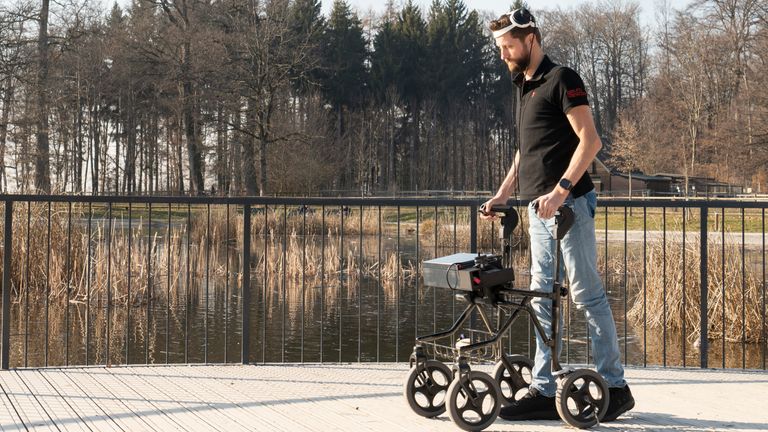A paralyzed man is able to walk again after using a wireless “digital bridge” to re-establish communication between the brain and spinal cord.
The so-called brain-computer interface consists of two electronic implants, one each in the brain and spinal cord.
read more:
Analysis: The paralysis breakthrough is quite amazing – AI is the key
The former sits above the area of the brain responsible for controlling leg movement and decodes the electrical signals produced when we think about walking.
Likewise, another implant sits above the part of the spinal cord that controls the leg.
Working together, the scientists say the breakthrough technology “turns thought into action” – repairing broken connections between the brain and the area of the spinal cord that controls movement.
The first patient was 40-year-old Dutch engineer Gert-Jan Oskam, who injured his spinal cord in a bicycle accident while working in China in 2011.
It left him paralyzed, but within days after surgeons calibrated the implant, he noticed an improvement.
Rediscover the simple pleasures
“I think the most surprising thing happened two days later,” Mr Oskam said.
“Within five to minutes, I can control my hips.”
Since then, the patient has been able to walk, climb stairs and pass ramps after “walking long distances” training.
He also rediscovered the “simple pleasures” of standing with friends at a bar.
The implant remained effective a year later, including when Mr. Oskam was left unattended at home.
He was treated by neuroscientists and neurosurgeons at the University Hospital of Lausanne and the University of Lausanne, Switzerland, and the Swiss Federal Institute of Technology in Lausanne.
The implant itself was developed by the French Atomic Energy Commission.
How does the technology work?
Guillaume Charvet, project leader at the council, said the implant uses “adaptive artificial intelligence” to decode the brain’s movement intentions in real time.
Once the AI identifies the relevant signals, they are translated into a sequence of electrical stimulation of the spinal cord, which activates the leg muscles and induces the desired movement.
Remarkably, the patient’s sensory perception and motor skills improved even when the digital bridge was off — allowing him to walk with a cane.
Professor Gregoire Courtine said this showed that the digital bridge not only repaired the man’s spinal cord, but also “promoted the growth of new neural connections”.
Mr Oskam is the only patient to have had the digital bridge tested, but hopes the technology could one day be used to restore arm and hand function.
It may also be used for paralysis from other causes, such as stroke.
The findings have been detailed in the journal Nature.
